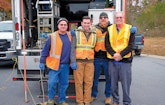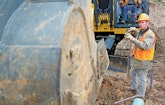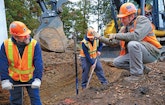
Taylors Fire and Sewer District Director of Sewer Services Samantha Babb with members of the construction crew, including (from left) Operations Supervisor Gary Cantrell, sewer technician Evett, crew leader Powell, and sewer technicians Yarbrough and Bourdess.
Don’t let the compact and pastoral nature of the Taylors Fire and Sewer District fool you. The district is driven by technology and run with award-winning efficiency.
“We have a combined 195.5 years of sewer experience on staff,” says Samantha Babb, director of sewer...










